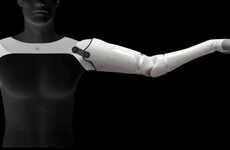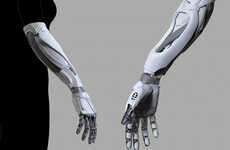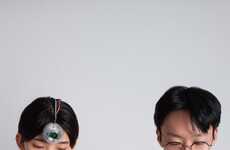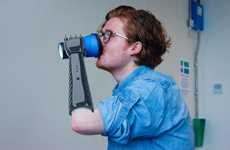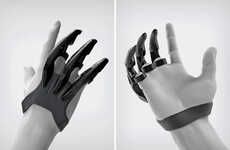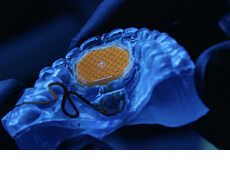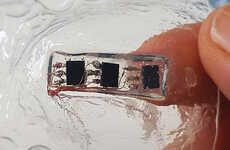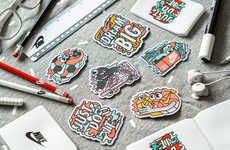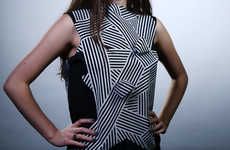
The 'Third Thumb' Allows Users to Extend Their Natural Abilities
Mary Van Puymbroeck — July 6, 2017 — Tech
Dani Clode, a graduate of the Royal College of Design, created a controllable prosthetic thumb.
Known as the 'Third Thumb,' this device was created by Clode to help destigmatize the wearing of prosthetics and promote the idea that they can actually serve us better by functioning as ability-extending devices. This controllable prosthetic thumb is put in motion by two motors pulling the thumb in various positions from its hinges. The Third Thumb operates by the movement of the wearer's feet from pressure sensors in their shoes.
People today already have an inherent connection between their hand and their feet (think of the pedals on a car or a sewing machine) so for Clode, it seemed natural to have the movement of the Third Thumb be controlled by the foot.
Known as the 'Third Thumb,' this device was created by Clode to help destigmatize the wearing of prosthetics and promote the idea that they can actually serve us better by functioning as ability-extending devices. This controllable prosthetic thumb is put in motion by two motors pulling the thumb in various positions from its hinges. The Third Thumb operates by the movement of the wearer's feet from pressure sensors in their shoes.
People today already have an inherent connection between their hand and their feet (think of the pedals on a car or a sewing machine) so for Clode, it seemed natural to have the movement of the Third Thumb be controlled by the foot.
Trend Themes
1. Ability-extending Prosthetics - Creating prosthetics that focus on extending the user's abilities instead of merely replacing lost ones.
2. Controllable Prosthetics - Developing prosthetic devices that can be easily and intuitively controlled by the user.
3. Destigmatizing Prosthetic Wear - Promoting the use of prosthetics as functional and fashionable accessories rather than symbols of disability.
Industry Implications
1. Medical Devices - Innovating new prosthetic devices for users with different needs and abilities.
2. Fashion and Accessories - Designing prosthetics as functional and fashionable accessories for daily use.
3. Robotics and AI - Developing technology to create more intuitive and responsive prosthetic devices.
2.8
Score
Popularity
Activity
Freshness


